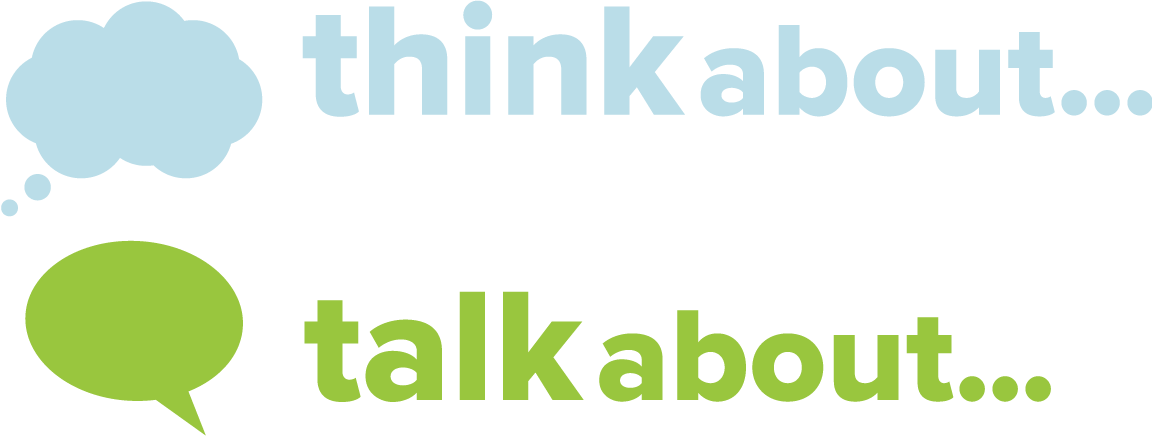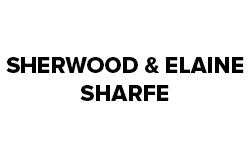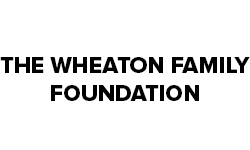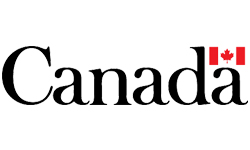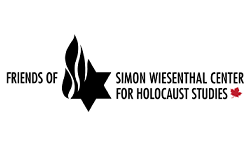Part B: Learning Plan
In this inquiry students will:
- Learn about their community history with emphasis on the impact of First Nation and Métis influences to understand how the past impacts their community today.
- Learn about the diversity that exists in their community and consider how it impacts the present community.
- Consider the similarities between cultures and cultural traditions.
CITIZENSHIP STUDY
- Investigate stories of significant events and persons in the local community’s history to describe the contribution of those who lived in the community in earlier times. (DR2.1)
- Students will learn the history of important events and people in their community to understand the impact on the community.
- Describe the influence of Treaty and First Nations and/or Métis, and Inuit peoples on the local community. (DR2.4)
- Create a representation of the diversity of cultural groups in the local community. (IN2.2)
- Students will be able to talk about the diversity of cultures in the community and understand how cultures are both similar and different.
QUESTIONS TO GUIDE INQUIRY
Process
- Pose the essential and guiding questions and allow students to discuss their thoughts on the matter.
- Determine what the students know, understand, need to be able to do to master/answer the essential questions (connect to content). Additional guiding questions can be added as required. Students are encouraged to add their questions to the others.
- Create Know, Want to know, Learned Chart – identify vocabulary that requires development
- Surface any additional questions students might have as a result of their discussions about the essential questions.
- Post student answers for reflection at end of study.
Essential Questions – Guiding Questions:
- How are present events related to past events?
- How is the present community/town/city structure related to the past?/How has this community changed over the years?
- What were the influences on the community of interactions with/working with/living alongside surrounding First Nation’s communities, Métis communities, Inuit (if appropriate) communities?
- How did the heroes/important community contributors/veterans contribute to their community?
- How did the hero’s/important community contributor’s/veteran’s point of view influence their behaviour?
- What story does their behaviour tell? (How does my background/point of view influence my behaviour?)
- How does the past influence your present behaviour, current ideas/thinking, your future behaviour, ideas/thinking?
- Why is this community organized the way it is?
- Why does this community celebrate the things it does?
- How did the past history contribute to the present community organization? celebrations?
- How does my background/point of view influence my behaviour?
- What kind of person am I?
- Why do I act the way I do?
- What story is my behaviour telling?
- What story does the community stewardship tell about this community?
Vocabulary
- culture
- traditions
- point of view
- diversity
- responsibility
- community stewardship
CONNECT TO TOPIC AND SURFACE STUDENTS’ THINKING ABOUT …
This section introduces the concepts and helps teachers gain an understanding of the current thinking of the class. Present essential questions and allow students to think about and talk about. Student answers will give teachers a baseline or beginning understanding of the amount of specific and incidental teaching required to explore these outcomes. Vocabulary is introduced and noted here. This section frames the “We do” portion of the lesson where teachers guide the initial structure of the inquiry.
Brainstorm with students places to look for information about the past i.e. people – elders, long-term residents, local history books, picture books, community/city records.
These people become the resident experts and will be resources for student exploration/research. Research could also be done in the form of interviews with the class.
Students will learn the history of important events and people in their community to understand the impact of community stewardship. They will develop an understanding of the history of their community and the contributions of people to their community. (Community refers to group of people living together and supporting one another and includes village, reserve, town, city)
- How did this community get its name?
- Why is this community located here?
- How old is this community?
- How many people live in this community? Has this number changed in 10 years?
- What are important places in this community?
- Who helped to build this community?
- What celebrations do we honour in this community?
- Veterans, inventions, partnerships with surrounding communities, etc.
- What important people or events are connected with the community?
What questions do students have about their community? Post and add to the questions.
DEVELOPING UNDERSTANDING
This section is the core of the lesson. It describes the main activity(ies) involved. In inquiry-based learning, the teacher facilitates the activities that lead to the understandings that student make of the essential questions. It is critical then, that students be allowed to raise questions and talk about issues that develop as they explore the learning activities.
Jigsaw Research and Study Process
Divide class into groups according to their interests and give each group a specific area to learn about and present to class. Each group must find out the information in the question posed below and present their findings to the class. Encourage students to present information learned in a variety of modes including speaking, writing, drama, multimedia, or other modes so that all students have an entrance point for demonstrating their learning and understanding.
- Location: What is the history of the location of the community (Reserve/Town site/City)?
- Why was the location chosen?
- How old is this community?
- How has the community changed and why?
- Demographics: Who lives in this community?
- How many people?
- How has the number of people living in the community changed?
- Where do most of the residents come from (heritage)?
- Why do the residents choose to come to the community? How has that changed?
- Community Heroes/Stewards: Who are the people in this community who have something named after them? What is the story?
- People who have made a significant contribution to their community are often honoured by having buildings, streets, parks, etc. named after them.
- Identify possible names for study. Consider veterans, historians, business people, former leaders, chiefs, etc.
- Services provided: What services does the community provide to support its citizens?
- What are the services?
- How long have those services been provided?
- How have those services changed over the years? Why have they changed?
- Local Community Influences: What were the influences of the local First Nation and Métis communities?
- Who were the communities who traded with local community?
- What partnerships did the community have with neighbour communities?
- How did they work together?
- What did they learn from each other?
- How the past history has impacted the present?
- How have our past connections with neighbour communities impacted us?
- What does the way this community honours the contributions of citizens say about the importance of the past?
- What does the way this community honours the contributions of citizens say about community stewardship? (Looking after and respecting our community.)
APPLY AND EXTEND KNOWLEDGE
This section includes ideas to extend the inquiry or apply concepts explored. This section may also include additional reflective questions to promote student connection to the topic. This forms the “You do” section of the inquiry – may be “you do it collaboratively” or “you do it alone”. Invite students to extend their thinking beyond the classroom discussions and inquiry experiences. Pose additional reflective questions that have been raised to encourage critical and creative thinking.
- Students will understand how diversity impacts the present and future of community. They will also learn that cultural practices that have their roots in history or another country are constantly changing and often have many similarities.
Using the information learned about the demographics of the community in the earlier study identify:- the various cultural groups in the community
- the cultural traditions, festivals, and celebrations that the community celebrates
- similarities and differences between the group celebrations, remembrances
- How have the different cultures, traditions changed the community?
EVIDENCE OF LEARNING
This section suggests ways in which students may demonstrate their understanding. Ideal demonstrations will be in authentic performance tasks. Each citizenship study may have its own smaller assessment piece or be compiled to support one larger performance task assessment. Assessment pieces vary, but should allow students to demonstrate their understanding in a variety of ways. Demonstrations of understanding may be done collaboratively or independently.
Following are the essential questions that students have been exploring throughout this unit of citizenship study.
- Have students develop their answers to the questions below based on information they learned from the history fair (jigsaw research and representation process).
- How did the past contribute to the present changes in the community?
- How did the heroes/important community contributors/veterans/neighbour communities contribute to their community? What story does their behaviour tell?
- What story does the community history tell about community stewardship?
- Tell how the diversity of cultures and individuals have changed and contributed to the well-being of the community i.e. – occupations, artistic community, etc.
- Allow students to identify ways to present their thinking that will demonstrate their understanding.
- Revisit K-W-L chart as a whole class to see if questions and ‘want to knows’ were addressed.
LEARNING PLAN
In this inquiry students will:
- Examine the history of their community and consider the impact of Indigenous people on community development.
- Examine their understandings of Indigenous people as engaged citizens.
CITIZENSHIP INQUIRY
QUESTIONS TO GUIDE INQUIRY
Questions are posted and discussed with students at the start of the exploration of study. These open-ended questions are continually revisited; encompass concepts that students will explore throughout the unit of study; form the evidence of understanding; and, frame the assessment at the end of the unit of study. Guiding questions are posed to support student thinking as they explore the answers to the larger overarching questions.
Essential Questions – Guiding Questions:
- How are present events related to past events?
- What is the Indigenous history in this community?
- What impact does Indigenous history have on this community?
- What impact do First Nations, Métis traditional teachings have on the way land is used in the community?
- How does my background/point of view influence my behaviour?
- What are my community’s Treaty responsibilities?
- How are Treaty responsibilities/relationships honoured in the community?
- How do First Nations traditional teachings/ traditional connections to the land contribute to community strength?
- What is my behaviour saying about what I think? (What story is my behaviour telling?)
- What does the community behaviour toward Treaty obligations say about what we think about the contributions of Indigenous people to our community?
- What story is told in the way that Treaty relationships are honoured?
- Is my behaviour planned or am I reacting?
- How can I control my behaviour?
- How can I change my behaviour?
- How does the past influence your present? Your future?
- What are your individual Treaty responsibilities/obligations?
- How does the past influence your present? Your future?
- What can individual students do to honour treaty obligations?
- What were the needs that each of the Treaty parties were trying to meet when they negotiated treaties?
DEVELOPING UNDERSTANDING
This section is the core of the lesson. It describes the main activity(ies) involved. In inquiry-based learning, the teacher facilitates the activities that lead to the understandings that student make of the essential questions. It is critical then, that students be allowed to raise questions and talk about issues that develop as they explore the learning activities.
Curricular Outcomes
- Describe the influence of Treaty, First Nations, Métis and/or Inuit people on the local community. (DR2.4)
- Students will understand the impact of Treaty and the contributions of First Nations, Métis, and/or Inuit people on the community.
- Create Know, Want to Know, Learned Chart – Chart additional questions students want to learn answers to.
- In what treaty area is this school?
- Identify on a map the Treaty territory within which the local community is situated.
- Who are the First Nations people in this treaty area?
- What is their history?
- Who are their heroes/leaders?
- What are the stories they tell?
- What do the First Nations people who live in this area believe about the land?
- How should the land be treated?
- Who owns the land?
- Why were treaties negotiated?
- Have students find out when their treaty was signed
- What problem needed to be fixed?
- Describe from the First Nation’s point of view.
- Describe from the government’s point of view.
- How have Treaty promises been honoured in the community?
- Have students discover how the community/province has honoured treaty responsibilities i.e. First Nations Schools, Health Centres, etc.
- How do First Nations traditional teachings/ traditional connections to the land contribute to community strength?
- What are First Nations connections/contributions/legacy to your community?
Divide students into groups and have them research the answers to the questions posed above. Students are encouraged to invite Elders and Knowledge Keepers into their classrooms or, in keeping with sense of place, visit reserves and band schools to talk with people and conduct their research.
Teacher Background
- First Nations peoples had a close relationship with the land. They shared a common view that humans were one small part of the creation and the most dependent of all entities. Humans were not superior to the rivers, forests, animals, and plants. They believed that the Creator gave them everything they needed but they were to take only what they needed to live. First Nations peoples knew that they had to adapt to the land rather than altering or transforming the land to suit their needs. First Nations peoples believed that the land could not be owned by any one nation and that the land could be shared through agreements made with one another. First Nations peoples believed that any treaties between nations could not involve any transfer of “title” to the land.
Source: Grade 2 Teaching Treaties in the Classroom pg. 19 - First Nations peoples believed that the creator provided them with everything they needed to survive. In return, they were to live in balance and harmony with nature. In their worldview, all things had spirits and were intimately connected with the Creator. They prayed and gave thanks to the Creator every day.
Source: Grade 2 Teaching Treaties in the Classroom pg. 25 - First Nations were going through a period of transition due to the influences of the newcomers such as disease, decline of the buffalo, decline of the fur trade. First Nations leaders needed to provide for their people. The British Crown wanted access to more land and resources. They were also afraid that the United States would expand into the west and northern parts of Canada. Both the British Crown and First Nations wanted to avoid the confrontations and wars that were happening in the United States.
Source: Teaching Treaties in the Classroom - First Nations worldview represents a unique perspective of the world and the interconnectedness to one another in the circle of life. Each Nation has their own ceremonies, protocols, and ways of relating and living this perspective. The main element of the worldview is to live in harmony with all created things and to ensure that all is in balance with one another. The worldview considers all things of the natural world to have a spirit, equally valued and that we cannot live one without the other. We experience worldview through oral traditions, ceremonial practices, stories, and dance. There is a balance of the spiritual, physical, emotional, and intellectual self. First Nation peoples acknowledge the Creator as the giver of life.
Source: The information is constructed from the teachings of Nehiyawak Elders of Treaty 6. Permission for use from Living Sky School Division. - For additional information teachers can also reference https://treaty6education.lskysd.ca the document Integrating Aboriginal Perspectives into Curricula, specifically pg. 7 -12 on Culture and Worldview retrieved from: http://www.edu.gov.mb.ca/k12/docs/policy/abpersp/ab_persp.pdf on Oct. 2017.
EVIDENCE OF LEARNING
This section suggests ways in which students may demonstrate their understanding. Ideal demonstrations will be in authentic performance tasks. Each citizenship study may have its own smaller assessment piece or be compiled to support one larger performance task assessment. Assessment pieces vary, but should allow students to demonstrate their understanding in a variety of ways. Demonstrations of understanding may be done collaboratively or independently.
Then Demonstrate your Understanding…
- How are present events related to past events?
- What impact does Indigenous history have on this community? Province?
- What impact do First Nations, Métis traditional teachings have on the way land is used in the community?/province?
- How do First Nations traditional teachings/ traditional connections to the land contribute to community strength? /provincial strength?
- How does my background/point of view influence my behaviour?
- How are Treaty responsibilities/relationships honoured in the community?/province?
- What does that behaviour demonstrate?
- How does the past influence your present? your future?
- What are my individual Treaty responsibilities/obligations?
- What can individual students do to honour treaty obligations?
STUDENT CITIZENSHIP JOURNAL OPPORTUNITIES
Students are keeping a Citizenship Journal to reflect upon their developing views of citizenship. This section provides prompts for student journals. Students are invited to choose one that interests them or propose their own. Students can also respond to any of the essential questions.
Students are encouraged to respond using a variety of genres.
- Think of a story of your family’s history that makes you proud. Tell the story and tell why it makes you proud.
- Think of a story of history that makes you proud. Tell the story and tell why it makes you proud.
Remember you can tell this story through any kind of representation, art, music, dance, video, etc.
© 2024 Concentus Citizenship Education Foundation Inc. All Rights Reserved.

